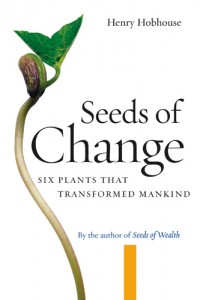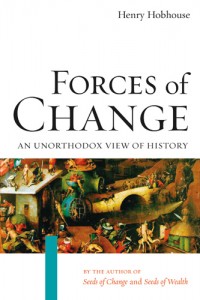Henry Hobhouse
Henry Hobhouse was born in Somerset, England in 1924 and was educated at Eton. He worked as a journalist for The Economist, Daily Express, and The Wall Street Journal and was one of the first directors of CBS-TV News. In 1954, he returned to his farm in Somerset. He died in 2016.
Subscribe to our newsletter for news & events from Counterpoint Press.
Books
Seeds of Wealth
Five Plants That Made Men Rich
Seeds of Wealth is a collection of elegant essays focusing on the economic and cultural consequences of the exploitation of timber, tobacco, rubber, and the wine grape. These cash crops have had, for the past three centuries, a profound effect on our world. In this intriguing account, Hobhouse illustrates how timber deficiency sparked an industrial revolution, tobacco lead to a wealthy and young nation, the rubber tree created nations, and wine provided the head, heart, and pocketbook with wealth.This book offers proof of how the seemingly irrelevant can have widespread unintended consequences. In presenting global history from his own perspective, Henry Hobhouse offers an overview of how nature has unwittingly contributed to the creation of human wealth and economic growth.
Seeds of Change
Six Plants That Transformed Mankind
A personal and highly original take on the history of six commercial plants, Seeds of Change illuminates how sugar, tea, cotton, the potato, quinine, and the cocoa plant have shaped our past. In this fascinating account, the impassioned Henry Hobhouse explains the consequences of these plants with attention–grabbing historical moments. While most records of history focus on human influence, Hobhouse emphasizes how plants too are a central and influential factor in the historical process. Seeds of Change is a captivating and invaluable addition to our understanding of modern culture.Forces of Change
An Unorthodox View of History
There are few books that have the insight and power to change the way we think. Forces of Change is one. In this updated edition, Henry Hobhouse argues provocatively, and most convincingly, that modern history has been shaped less by the actions of human beings than by three natural forces: population growth, food supply, and disease. Together they form a self–balancing triangle: any change in the dimension of one side, Hobhouse shows, is and must be matched by changes in one or both of the other sides. Using key examples from the history of the past five hundred years, the author opens our eyes to new possibilities, so that history as learned from our textbooks takes on a whole new light.As original as it is ambitious, Forces of Change examines history from the time of the Black Plague to the present day, observing in each period and historical situation the relative roles of the three sides of the triangle. The result is a work that is revealing, eloquent, and—despite the seriousness of the subject—always witty and eminently readable.

Catapult | Counterpoint | Soft Skull
20 Jay Street #704
Brooklyn, NY 11201
646.926.0805 | contact@catapult.co







